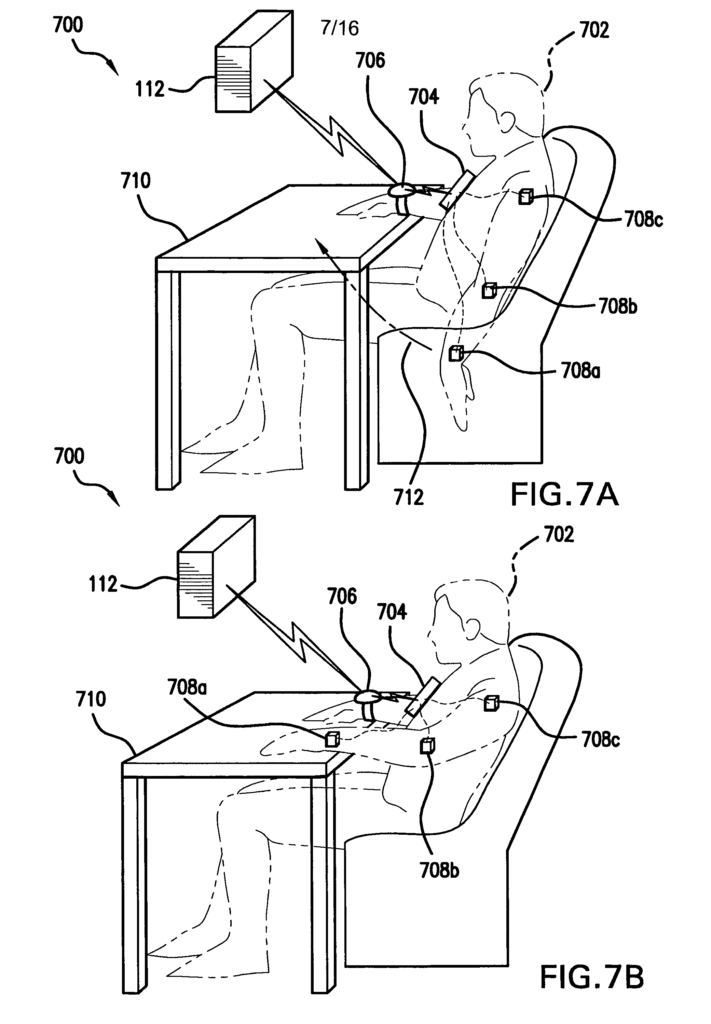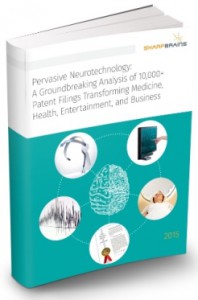The state of intelligent wearable monitor systems and methods: Key neurotechnology patent #40

– Illustrative image from U.S. Patent No. 7,981,058
Today we highlight a 2011 patent by Dartmouth College, The National Institutes of Health (NIH), and the U.S. Department Of Health And Human Services, aimed at fine-tuning treatment of Parkinson’s disease, stroke and other diseases affecting motor function. (As mentioned, we are featuring a foundational Pervasive Neurotech patent a day, from older to newer by issue date)
U.S. Patent No. 7,981,058: Intelligent wearable monitor systems and methods
- Assignee(s): The Trustrees of Dartmouth College; The NIH, U.S. Dept. Of Health And Human Services Government
- Inventor(s): Metkin Akay
- Technology Category: Neuro-monitoring
- Issue Date: July 19, 2011
SharpBrains’ Take:
The ‘058 patent relates to wearable systems that allow for enhanced assessment of a patient’s physical movement and thereby fine-tuning treatment of Parkinson’s disease, stroke and other diseases affecting motor function. By including two accelerometers on the patient to discern relative changes in body positioning (e.g., between a torso and appendage), a patients movement and time data is plotted on a graph next to similar movement patterns associated with a healthy individual. The ‘058 patent describes how comparing such movement profiles and related parameters may allow for more specific diagnostics and treatments. The significant number of application forward citations (76 total), combined with the important contributions to increasing precision in treating neuromotor afflictions, are among the factors making the ‘058 patent a key non-invasive neurotechnology patent.
Abstract:
An intelligent wearable monitoring system includes a wireless personal area network for extended monitoring of a patient’s motor functions. The wireless personal area network includes an intelligent accelerometer unit, a personal server and a remote access unit. The intelligent accelerometer unit measures acceleration data of the patient, in real-time. The personal server processes the acceleration data, applying linear and non-linear analysis, such as fractal analysis, to generate motor function information from the acceleration data. Motor function information is transmitted to a remote access unit for statistical analysis and formatting into visual representations. A data management unit receives the formatted motor function information and displays the information, for example, for viewing by the patient’s physician.
Illustrative Claim 1. A method of monitoring the motor function of a patient, comprising:
- capturing acceleration data from the patient with at least a first accelerometer and a second, biaxial accelerometer located on an appendage of the patient, the first accelerometer capturing objective acceleration data, and the second, biaxial accelerometer capturing subjective acceleration data relative to at least the first accelerometer;
- wirelessly communicating the acceleration data to a personal server positioned on the patient at a location spaced from the accelerometers; and
- processing the acceleration data by computing nonlinear parameters for the acceleration data to generate at least two levels of motor function information, the nonlinear parameters chosen from the group of a maximum likelihood estimator fractal, an approximate cross entropy method, and an average amount of mutual information measure.
 To learn more about market data, trends and leading companies in the digital brain health space –digital platforms for brain/ cognitive assessment, monitoring and enhancement– check out this market report. To learn more about our analysis of 10,000+ patent filings, check out this IP & innovation neurotech report.
To learn more about market data, trends and leading companies in the digital brain health space –digital platforms for brain/ cognitive assessment, monitoring and enhancement– check out this market report. To learn more about our analysis of 10,000+ patent filings, check out this IP & innovation neurotech report.


